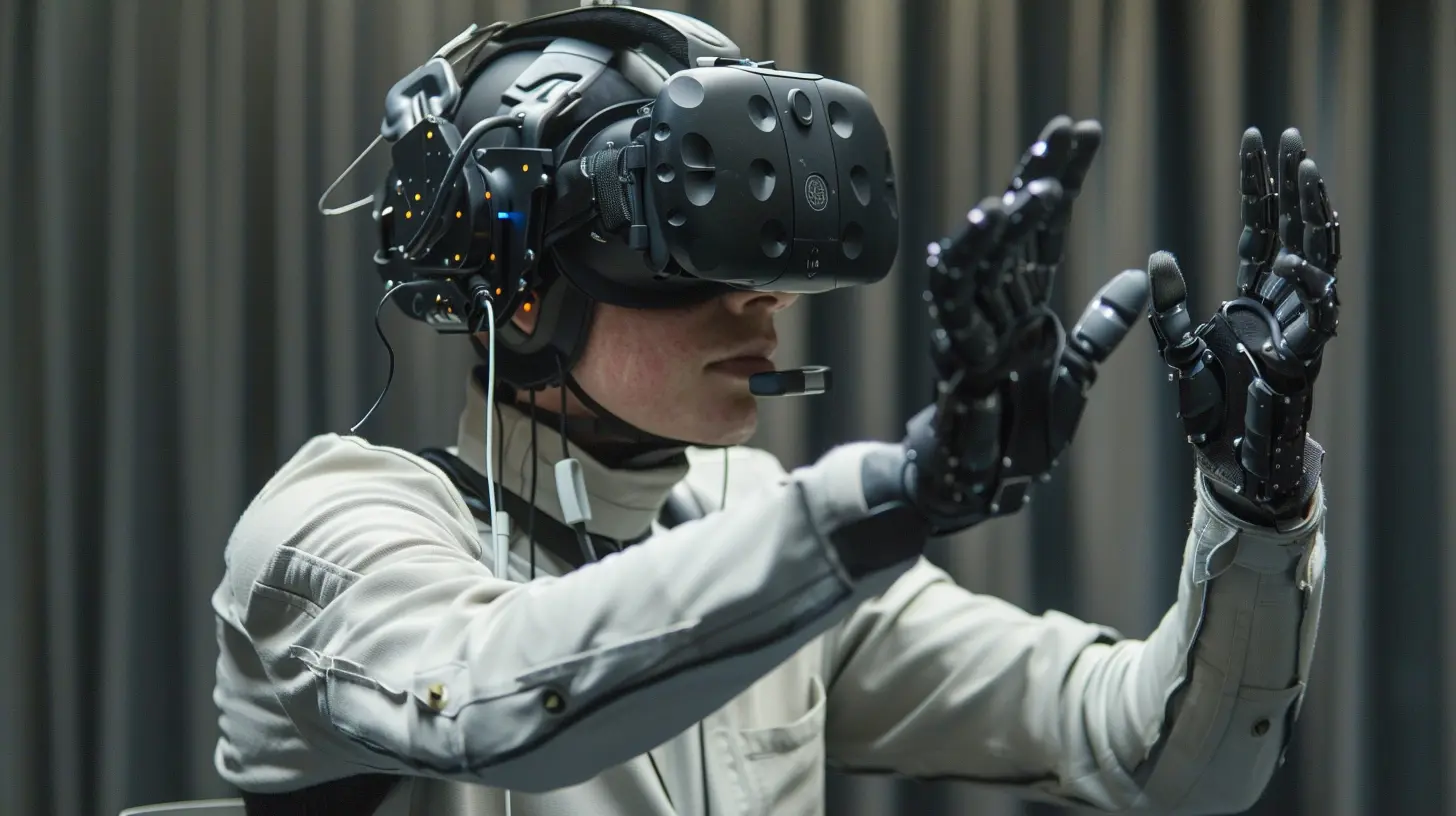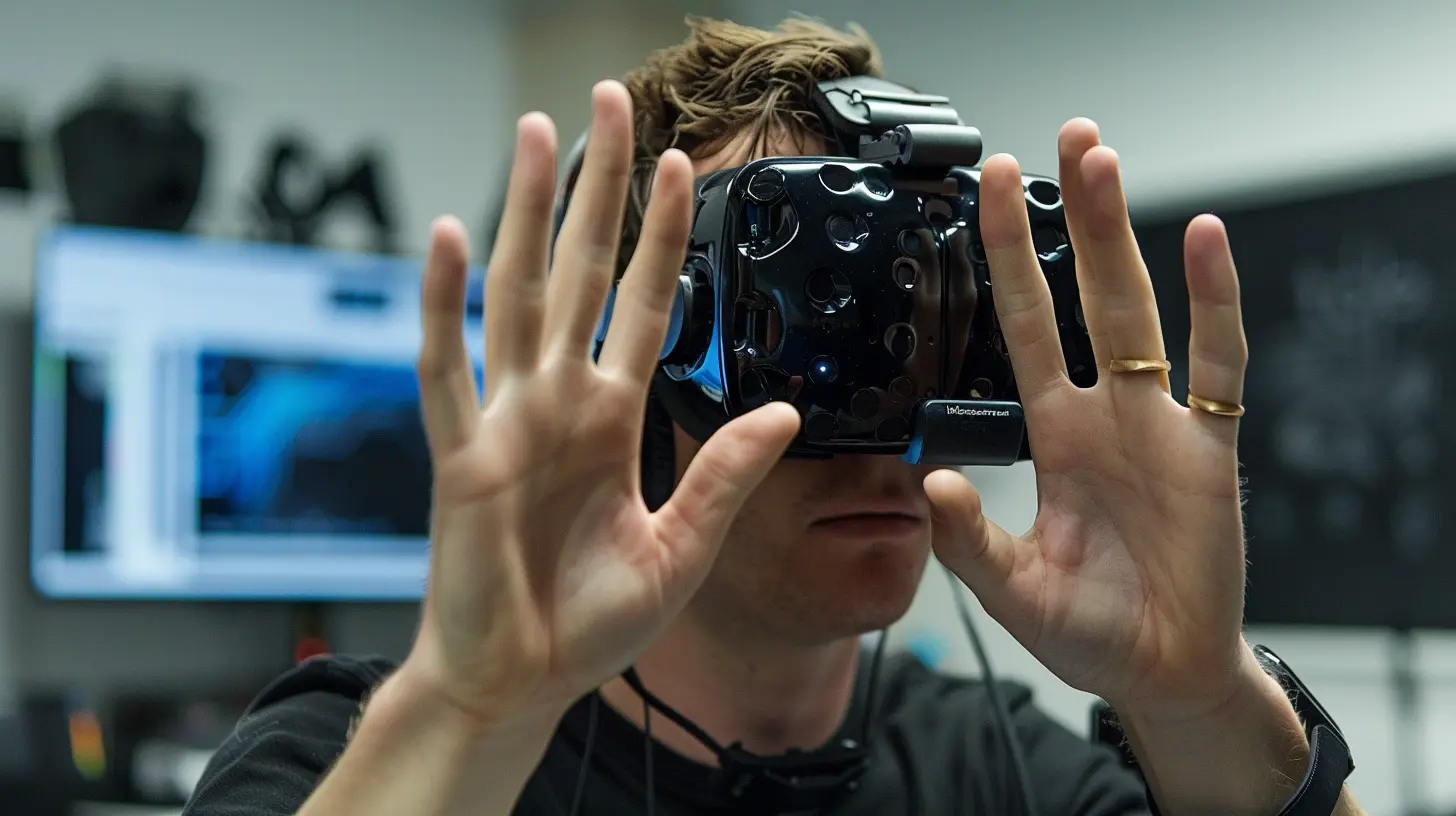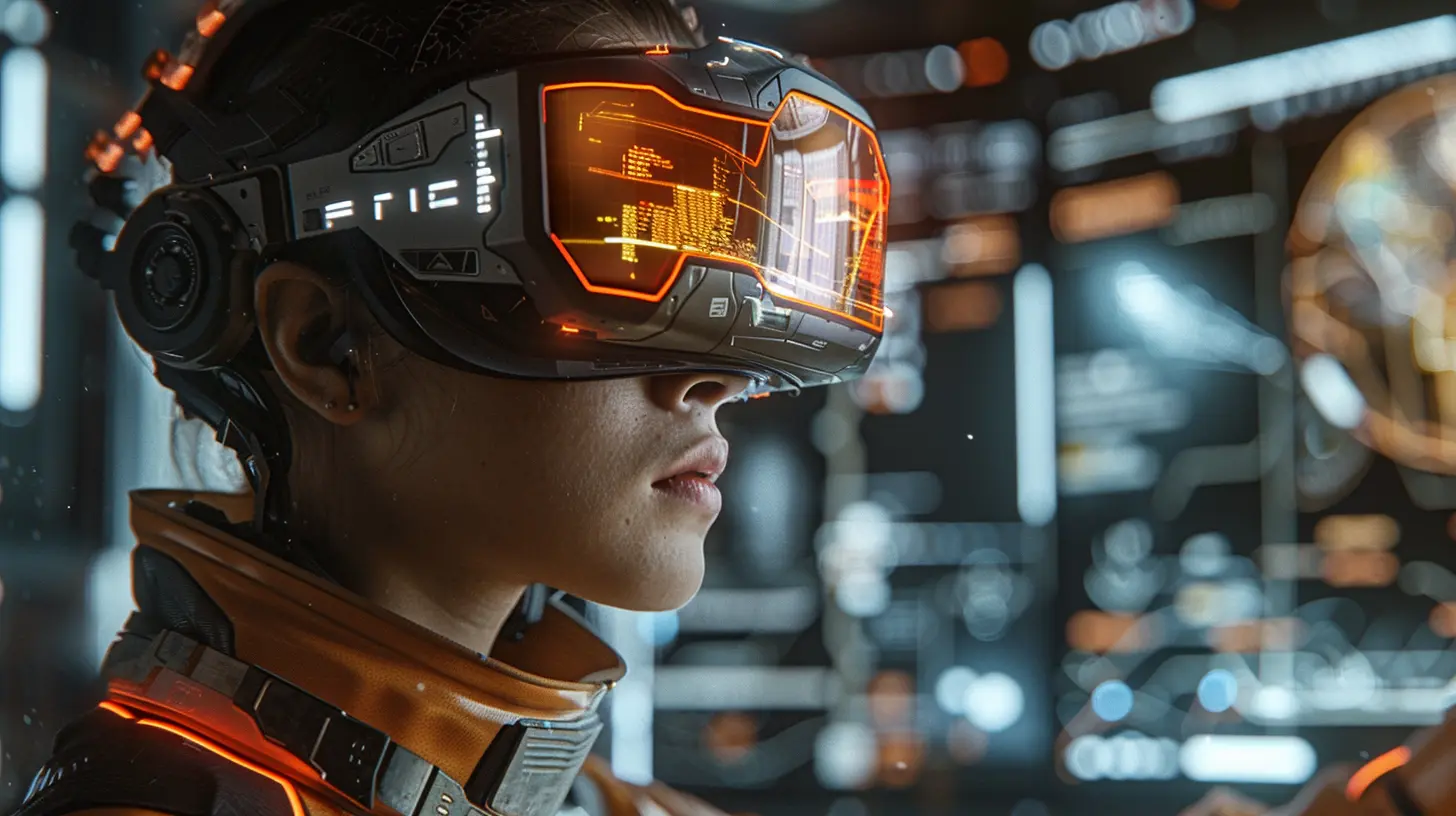The Future of Haptic Feedback in Virtual Reality
30 April 2025
Virtual reality (VR) is already revolutionizing the way we experience digital content. But let’s be honest—there’s still something missing. You can see and hear these virtual worlds, but can you feel them? That’s where haptic feedback comes in.
Imagine reaching out to grab an object in VR and actually feeling its texture, weight, and resistance. That’s the future we’re heading towards. And trust me, it’s going to change everything!
In this article, we’ll dive deep into how haptic feedback is evolving, its potential impact, and how it will shape the future of immersive experiences. 
What Is Haptic Feedback?
Before we go any further, let’s break it down. Haptic feedback refers to technology that recreates the sense of touch through vibrations, forces, and motions. It’s the same tech that causes your phone to buzz or your game controller to shake when you take damage.But in VR, haptics are about more than just vibrations—they're about immersion. Developers are now looking at new ways to make virtual interactions feel as real as possible.
You don’t just want to see a fire in VR; you want to feel its warmth. You don’t just want to swing a sword; you want to feel the resistance as it clashes with another blade. That’s what haptic feedback aims to bring to the table. 
How Does Haptic Feedback Work in VR Today?
Currently, there are a few types of haptic feedback being explored in VR:1. Vibration-Based Haptics
Most VR controllers today, like those from Oculus and HTC Vive, use vibrations to simulate touch. It’s simple yet effective. You get small vibrations when you fire a gun or touch an object, which helps immersion.2. Force-Feedback Systems
Some advanced VR devices use force feedback to provide resistance when interacting with objects. Imagine trying to push a heavy box in VR and actually feeling the weight pushing back—that’s force feedback in action.3. Wearable Haptic Suits and Gloves
Ever heard of haptic gloves or full-body haptic suits? Companies like HaptX and TESLASUIT are developing gear that lets you feel sensations across your body. These wearables use air pressure, vibrations, and electric stimulation to mimic realistic touch.4. Ultrasonic and Air-Based Haptics
Some companies are experimenting with mid-air haptics, where sound waves or air currents create the illusion of touch without requiring wearables. It's still in its infancy but could be game-changing.
The Next Big Leap: Where Is Haptic Feedback Headed?
The technology is evolving fast, and the possibilities are mind-blowing. Here’s a sneak peek into the future:1. Ultra-Realistic Textures and Sensations
Imagine being able to feel the difference between silk and sandpaper in VR. Future haptic gloves could have thousands of mini actuators simulating tiny pressure points, offering highly detailed feedback.2. Full-Body Immersion
Right now, VR focuses mainly on your hands. But what about your whole body? Haptic bodysuits are getting better, allowing you to feel raindrops, wind, or even temperature changes.3. Neural Interfaces for Touch Simulation
Some research is exploring brain-computer interfaces (BCIs) to stimulate touch directly in the brain. Instead of using external sensors, what if your brain just believes you’re feeling something? This could redefine VR interaction entirely.4. Smarter AI-Driven Haptics
Artificial intelligence could help create more adaptive and realistic haptic feedback. Imagine AI analyzing your actions and adjusting touch sensations in real time for a hyper-personalized experience.
The Impact of Haptic Feedback on Different Industries
Haptic feedback isn’t just for gaming; it’s going to reshape multiple industries.1. Gaming and Entertainment
Gamers will finally feel the impact of every punch, bullet, and explosion. This will make gaming far more engaging and emotionally compelling.2. Healthcare and Therapy
Doctors could use VR haptics for remote surgeries or training. Physical therapy patients could regain movement by simulating real-world exercises inside VR.3. Education and Training
Learning could become hands-on no matter where you are. From practicing surgical procedures to handling dangerous machinery, VR haptics will provide realistic training without real-world risks.4. Social and Remote Interaction
What if you could hold hands with someone through VR? Social VR platforms could let you hug, shake hands, or even feel contact from loved ones miles away.5. Design and Architecture
Future designers could "feel" 3D models before they’re built, improving usability and ergonomics. Imagine a car designer being able to "touch" the leather seats of a new model in VR before production even starts.Challenges and Roadblocks
Of course, with every futuristic concept, there are challenges to overcome:- Cost & Accessibility – High-end haptic suits and gloves are still expensive. Making them affordable will be key.
- Realism vs. Comfort – Too much haptic feedback could become uncomfortable or even painful. Balancing realism and usability is crucial.
- Compatibility Issues – Different VR systems need to standardize haptic feedback so developers can create universally compatible experiences.
- Latency & Precision – The slightest delay in haptic feedback could break immersion, making responsive hardware a priority.
Despite these challenges, progress is happening fast. The industry is investing heavily in research, and we're already seeing breakthroughs every year.
Final Thoughts: Are We Ready for Fully Immersive VR?
The short answer? Almost.Haptic feedback in VR has come a long way, but we’re still in the early stages of true presence simulation. As technology advances, we’ll reach a point where the virtual world feels just as real as the physical one.
The next 5-10 years will be game-changing. Whether you’re a gamer, a designer, a doctor, or just someone fascinated by tech, haptic feedback is going to redefine how we interact with digital spaces.
And when that moment comes, the line between reality and virtual will blur like never before. Are you ready for it?
all images in this post were generated using AI tools
Category:
Tech InnovationsAuthor:

Adeline Taylor
Discussion
rate this article
7 comments
Maris Fields
This article insightfully explores haptic feedback's role in enhancing immersion in virtual reality. As technology advances, it will undoubtedly transform user experiences, making virtual interactions feel more tangible and realistic.
May 15, 2025 at 7:25 PM

Adeline Taylor
Thank you for your thoughtful comment! I'm glad you found the article insightful—haptic feedback truly has the potential to revolutionize virtual experiences.
Maisie Brown
Great insights on haptic feedback! It's fascinating to see how these advancements can enhance immersion in virtual reality. Looking forward to experiencing the next generation of technology firsthand!
May 7, 2025 at 4:42 AM

Adeline Taylor
Thank you! I'm glad you found the insights valuable. Exciting times ahead for haptic feedback in VR!
Sabina McWain
Haptic feedback technology in virtual reality is poised to revolutionize user experiences by enhancing immersion and realism. As innovations progress, we can expect more nuanced and responsive interactions.
May 6, 2025 at 12:25 PM

Adeline Taylor
Absolutely! Haptic feedback will indeed elevate VR experiences, making interactions more immersive and realistic as technology advances. Exciting times ahead!
Elara McVaney
Haptic feedback's evolution in VR could revolutionize user immersion, enhancing emotional connections and realism in virtual experiences. Exciting potential ahead!
May 5, 2025 at 12:09 PM

Adeline Taylor
Thank you! I completely agree—haptic feedback is a game-changer for immersion and emotional engagement in VR, and I’m excited to see how it evolves!
Rose Rocha
What an engaging read! The exploration of haptic feedback's evolving role in virtual reality is incredibly exciting. As technology advances, the possibilities for immersive experiences seem limitless. I can’t wait to see how this will transform our interactions in VR! Keep up the great work!
May 5, 2025 at 2:49 AM

Adeline Taylor
Thank you for your kind words! I'm thrilled you found the exploration of haptic feedback in VR exciting. The potential for immersive experiences is indeed vast, and I appreciate your support!
Wilder Maddox
This article offers insightful predictions on haptic feedback's evolving role in virtual reality. By enhancing sensory immersion, future advancements could revolutionize user experiences, making virtual environments feel more tangible and engaging. Exciting times lie ahead for VR enthusiasts!
May 4, 2025 at 12:19 PM

Adeline Taylor
Thank you for your insights! I completely agree that advancements in haptic feedback will significantly enhance sensory immersion and user experiences in virtual reality. Exciting times indeed!
Josephine Moore
Fascinating insights! How might advancements in haptic feedback revolutionize user experiences in VR? I'm eager to see how touch will enhance immersion and interaction. What applications excite you the most?
May 2, 2025 at 4:30 AM

Adeline Taylor
Thank you! Advancements in haptic feedback will significantly enhance immersion by creating realistic sensations that mimic physical interactions. Applications like virtual training simulations, gaming, and therapy hold immense potential to revolutionize how we engage with VR environments. Exciting times ahead!
MORE POSTS

How Omnichannel Strategies Are Dominating E-Commerce

Serverless Architecture: The Future of Scalable Applications

Building Cross-Platform Apps with Flutter: A Comprehensive Guide

How to Implement a Successful E-Commerce Upselling Strategy

How Waterproof Are Wireless Earbuds? Understanding IPX Ratings

Quantum Computing and Space Exploration: Unlocking New Possibilities